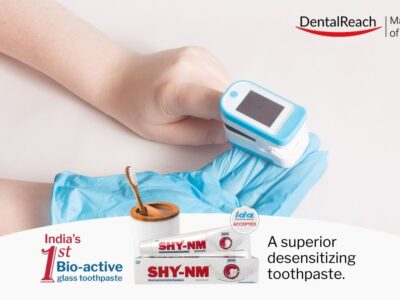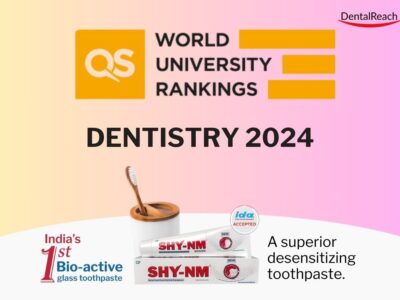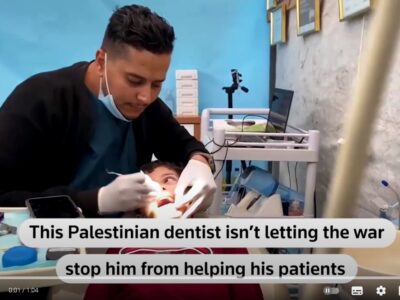The field of dentistry has always been impacted by advances in the field of technology. Recently there has been a new era in clinical data exchange among patient and clinicians due to increased use of software applications.

Teledentistry is a combination of telecommunications and dentistry, involving exchange of clinical information and images over remote distances for dental consultation and treatment planning.
If this concept is put into action properly it can solve problems in remote areas related to:
- Access to dental treatments.
- Cost efficiency and
- Quality of dental treatment.
It is sometimes difficult to find a specialist in remote and rural areas. In such cases Teledentistry can be used to extend care to the underpriviliged communities by the local dentist in that area and at an affordable price.
Internet and technology has made this world a small space. However far people may be geographically, they are well connected through various social medias. This gave rise to the concept of teledentistry to solve complex medical and dental problems.
History of Teledentistry:
The U.S army’s Total Dental Access (TDA) project is considered to be the frontier of Teledentistry which began in the year 1994. It is a project within the armed forces which enables the referring dentists to consult the specialists at the medical centre about the status of patient.

Forms of Teledentistry:
Teledentistry can take two forms:
1. Real-time consultation:
Real-time consultation involves a video conference in which dental professionals and their patients who are at different locations can see, hear and actually communicate with each other using advanced telecommunication technology.
2. Store and forward:
Store and Forward type involves collection of all required clinical information, intra and extra oral images, radiographs etc and sending them to the concerned consultant for treatment planning through established network. This option is more cost effective.
Requirements to practice teledentistry
For most dental applications, store-and-forward technology provides excellent results without excessive costs for equipment or connectivity.
A typical store-and-forward teledentistry system consists of:
- Computer with substantial hard drive memory, random access memory.and a speedy processor.
- An intraoral video camera.
- A digital camera for the capture of pictures.
- A modem
- An Internet connection.
The TeleDentists offers several programs to the public, including:
- Dental Second Opinions, giving patients the opportunity to consult with specialists on a proposed dental treatment.
- The Education Center (accessible to the public), where users can discuss products and home care with dentists.
- Smile Survey to see how their smile scores from 1-10. For those who want to improve their score, The TeleDentists are available to give oral hygiene instructions and product recommendations.

Advantages of Teledentistry
- ACCESS TO UNDERTREATED POPULATION.: It is specifically a boon for older people, for those who are physically or mentally handicapped and those who are in remote areas like military bases and villages.
- COST EFFECTIVE: The initial set up cost might be high but it is one time investment. Moreover many mobile applications are coming up which are the simplest way to forward images for teleconsultation.
- EARLY DIAGNOSIS: As travel time of the patient is saved and there is almost instant access to the specialist there is substantial reduction in time taken for diagnosis.
- MEDICAL E-PRESCRIPTION:It saves the patient a visit to the clinic but can be risky at times and patients should be asked about histories and allergies.
- ENHANCED COMMUNICATION: One can compare opinions and consult with the peers for better diagnosis.
- STORAGE OF DATA.
But it is to be kept in mind that nothing can ever beat the accuracy of clinical diagnosis.It is not possible to perform Palpation or percussion of the concerned area through teledentistry however good the quality of the image may be. Another issue of concern is the confidentiality of patient information which can sometime give rise to legal issues.
But yes, teledentistry can help bridge the oral health gaps throughout the world in a way.and ease the problem of shortage of specialist consultants.
REFRENCE:
- American Dental Association. State and Community models for Improving Access to Dental Care for the Underserved – A White Paper. Chicago: American Dental Association; 2004.
- Rocca MA, Kudryk VL, Pajak JC, Morris T. The evolution of a teledentistry system within the department of defense. Proc AMIA Symp 1999:921-4.
- Eby A, Sanju L, Shilpa C, Abraham K. Teledentistry in practice – An update. IOSR J Dent Med Sci 2016;15:103-6.
- N. D. Jampani, R. Nutalapati, B. S. K. Dontula, and R. Boyapati – Applications of teledentistry: A literature review and update. 2011 Jul-Dec; 1(2): 37–44.

















Dentistry is important field at this time.
I’d like to seek some information ASAP for the use of this in Australia.